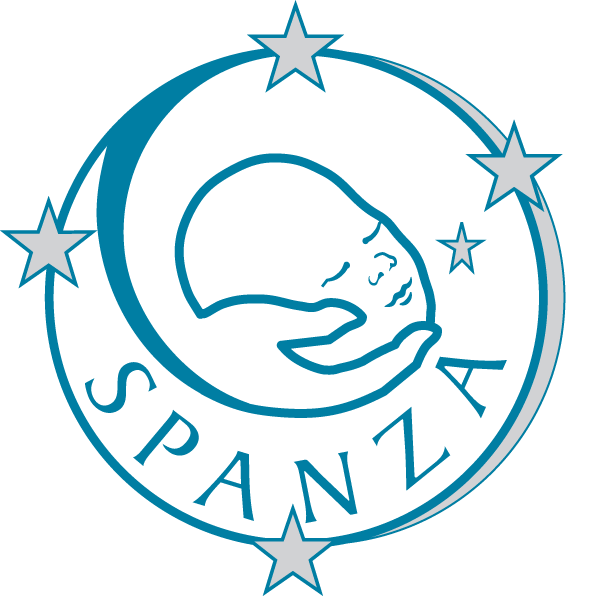Caudal block, high flow oxygen insufflation and dexmedetomidine sedation for inguinal hernia surgery in infants-A prospective evaluation of an alternative anesthesia technique
A prospective evaluation of an alternative anesthesia technique
Pediatric Anesthesia
Submitted May 2025 by Dr Michael Tan
Read by 602 Journal Watch subscribers
Overview
This study is a prospective, multicentre, observational study across two Australian centres and one New Zealand centre. The aim was to assess the feasibility of intravenous dexmedetomidine, high-flow nasal oxygen insufflation, and caudal block for inguinal hernia surgery
Across the three centres, 50 children were included in the study. A dexmedetomidine load of 1-2mcg/mg was given over 10 minutes followed by an infusion and supplemented with remifentanil. A caudal block was performed with 1ml/kg of 0.2% ropivacaine and high flow nasal oxygen at 2L/kg/min.
41 out of 50 (82%) infants completed surgery. 9 patients needed conversion to general anaesthesia including 6 for inadequate caudal block (12%), 2 for inadequate sedation (4%) and 1 for hiccups (2%). One infant required an overnight admission to NICU for apnoeas. No infants required intubation in the first 24 hours post-operatively. No statistically significant factors contributing to conversion to general anaesthesia were identified.
Conclusion
This study shows that this technique employing sedation and regional anaesthesia might be a feasible technique for inguinal hernia surgery. The authors acknowledge that a prospective randomised controlled trial is needed to compare this technique to more established techniques such as general anaesthesia and spinal anaesthesia.
Back to top
Design considerations for development of cuffed endotracheal tube for small airways
Pediatric Anesthesia
Submitted May 2025 by Dr Cedric Sottas
Read by 510 Journal Watch subscribers
Introduction
This paper and the work relating to the design of endotracheal tubes specifically for the paediatric population was sponsored and funded by Medtronic.
The article begins by introducing technical aspects of designing paediatric endotracheal tubes, and is similar to a bench to bedside study, with no mention of specific endotracheal tubes currently on the market.
The aspects of design considered include:
- Endotracheal tube length
- Cuff position
- Murphy eye
- Depth of insertion
- Cuff Shape
- Resting cuff diameter
- Material
While most aspects of this article are well known to clinicians experienced in paediatric airways, it can be seen as a refresher that expands on lesser-known aspects like the choices of materials used.
Summary
To further break down these design considerations:
Endotracheal tube length
Authors cite previously published studies for calculating the distance between carina and cricoid cartilage. The measurements and references are summarized in table 1.
Cuff position
As the cuff should be between cricoid and carina, authors describe calculations based on partial data to estimate the length of the trachea as well as the distance from the vocal cords to the cricoid and infer the length available for a cuff
Murphy eye
The authors state their decision not to include a Murphy eye, which is in accordance with other paediatric cuffed ETTs.
Depth of insertion
The paper describes this calculation with the tip of the tube being at 2/3 of the total distance between the carina and the cricoid, which in turns allows determination of the distance where markings should be made on the tube to help guide the clinician. The risks of putting the marks too proximal or too distal are also described.
Cuff shape
This topic is most relevant to the paediatric population. The authors describe the different types of cuff:
- Tight to shaft; which does not allow reliable measurement of the pressure transmitted to the trachea wall
- High volume low pressure; which allow those measurements, but could have the disadvantage of a larger than trachea diameter, with folds or creases appearing in the cuff, potentially causing microaspirations
- Low volume, low pressure; These are further subdivided into cylindrical and tapered shape, the latter being described as potentially less injury provoking on the tracheal wall (animal study)
Resting cuff diameter
The authors state that the ideal resting cuff diameter for an ETT is approximately 120% of the largest cross-sectional area of an age-related trachea from previous published data - bearing in mind the heterogeneity of resting cuff diameter. There is some detail on the risk of having an undersized and oversized cuff but no solution to this problem.
Material
The paper describes that the material used in making the ETT could be absorbed and lead to toxicity (such as with DEHP). The materials used are mainly PVC and PU. The authors argue that PU is superior, with potentially less microaspirations. They acknowledge the fact this is not a clinically proven fact, with differing results between studies, and it should be noted that costs are higher with PU.
Back to top
Awake Supraglottic Airway Placement in Pediatric Patients for Airway Obstruction or Difficult Intubation
Insights From an International Airway Registry (PeDI)
Anesthesia Analgesia
Submitted May 2025 by Dr Henrik Hack
Read by 635 Journal Watch subscribers
Study type:
A large, prospective, observational study using data from the international, multi-centre PEDI registry.
Data was contributed from 18 institutions.
Subject:
All cases of awake supraglottic airway (SGA) placement (in anticipation of a difficult airway and endotracheal intubation) in children from February 2013 to June 2023.
It should be pointed out from the outset that the study looks at various intubation techniques used following the placement of an SGA, including both flexible scope guided intubation and the removal of the SGA (having confirmed ventilation or otherwise) followed by the use of other intubation techniques (see below). This wasn’t clear to me from the outset (probably due to an incorrect assumption from me that it would be dealing with intubation techniques utilising the SGA as a conduit!). I mention this at the start so as to avoid any confusion from readers.
Results:
Demographic data.
There were 8061 cases entered into the PEDI registry during the study period. A total of 93 patients (undergoing 95 separate attempts at awake SGA placement) were analysed.
Median (Range, IQR) age was 37 days (0-17.6 years, 18d- 4.3 m) and weight 3.7kg (1.6-46.7kg, 3-5.5kg).
There were 39 neonates included; 16 children were over 2years of age.
80 (84%) had either a disease or syndrome known to be associated with difficult intubation (DI) or had been a previous DI. Of these, 49 (52%) had Pierre Robin sequence (PRS).
SGA Placement.
In 62 (65%) of cases the SGA was placed unsedated. Topical lignocaine (method(s) of application not described) was used in only 20 (33%) of cases. Thus, in 42 cases no additional technique was used. The median age of this group was 32.5d but the oldest child was 14 years. Ventilation was described as “adequate” (>5ml/kg) in 50 (81%) cases, inadequate in 11 (18%) & “impossible” in 1 (2%).
“Light” sedation was used in 25 (26%). “Light” sedation was defined as the use of either fentanyl, morphine, dexmedetomidine or low dose (<0.5mg/kg) ketamine. Dosages of these drugs were not published. Additionally, topical lignocaine was administered in 4 (16%) cases. Again, the median age was low at 40d but the Range was 3d -17.6years. Adequate ventilation was attained in 24/25 (96%) cases with only 1/25 (4%) described as inadequate.
“Deep” sedation was used in 8/95 (8%) cases. “Deep” was defined as the use of ketamine >0.5mg/kg or propofol up to 2mg/kg. None of these cases received topical lignocaine. The median age of this group was 8 years. Ventilation was adequate in 7 (88%) and inadequate in 1 (12%).
Overall, SGA placement was described as “easy” in 89 (94%) of cases. In these cases, ventilation was adequate in 78 (88%) and inadequate in 11 (12%). Where placement was described as “difficult” (6 cases (6%)) adequate ventilation was achieved in only 3 (50%) cases. Ventilation was inadequate in 2 (33%) or impossible in 1 (17%) case. The median age for all inadequate and impossible ventilation cases was 38d but with a range of 0-13.8 yrs.
SGA types.
SGA brand used included AirQ 57 (60%), LMA unique 18 (19%) and Ambu AurOnce or AuraGain in 18 (19%). This presumably reflected institutional choices at the time. Overall, adequate ventilation was achieved in 81 (85%) cases. No comment was made regarding differences between SGA’s.
Intubation attempts.
Overall in 35/95 (33%) cases the child was intubated successfully at first attempt, with 94 (99%) eventually being able to be intubated. The median (IQR, range) number of attempts was 2 ((1-3), 1-16)).
Successful intubation ≤2 attempts was achieved in 61/95 (64%) cases. In 11/95 (12%) cases more than 6 attempts were needed to intubate the child.
Neuromuscular blockade was used before first intubation attempt in 24/66 (36%) cases where the information was available.
Flexible scope via the SGA was the most popular first attempt technique. It was also the most successful first attempt success technique (44/94 (47%) of cases).
Direct laryngoscopy was the second most popular intubation technique used, 20/95 (21%), but was successful in only 4 (4%) cases.
Standard blade VDS was used in 16 (17%) cases and was eventually successful in all cases. Similarly hyperangulated blade VDS was used in 8 (8%) of cases and successful in 7 of these.
Other techniques stated included combinations of equipment and skills sets.
There was one failed intubation. This baby had adequate ventilation whilst spontaneously ventilating with an SGA in situ. Ventilation became difficult once NMB was given. Numerous intubation attempts failed but the child resumed spontaneous ventilation after NMB reversal and was subsequently woken up.
Complications.
There were no cardiac arrests or deaths. Complications occurred in 9 (9%) cases including hypoxia (SpO2 <90% for >1minute) in all 9 cases.
Comments
The use of an SGA has been advocated both as a rescue device for failed ventilation and oxygenation in children or as a subsequent conduit for flexible scope guided intubation. Indeed the theoretical ability to oxygenate and anaesthetise using volatile anaesthetics is attractive to help prevent hypoxaemia (and awareness) whilst minimising complications and number of intubation attempts.
This report provides ample “real world anaesthetic practice” evidence to support these recommendations in all age groups.
Since the registry is multi centre & observational it is perhaps inevitable that there are some anaesthetic practises that this reviewer finds surprising:
-
As expected many of the cases are small babies with recognised syndromes such as PRS. This would be familiar to many readers. The use of awake SGA placement in older children, including teenagers, was a surprise to me considering the already well established awake Flexiscope guided nasal intubation (usually with topicalisation and sedation) technique. It was interesting to read that the one failed intubation, already described, had an awake nasal FB guided intubation at a later date.
-
A significant proportion of small babies had an SGA placed without sedation or topicalisation with lignocaine. This surprised me and left me wondering whether such practice, presumably based on the fear of “losing the airway” might actually be counterproductive since it might increase the risk of airway trauma and laryngospasm? This might be supported by the finding that difficult placement and inadequate ventilation were more likely to occur in younger, “unprepared” babies? Unsurprisingly, sedation and lignocaine were more likely to be used in older children.
-
The decision to establish and effective airway awake and then remove it to pursue an alternative intubation technique to a flexiscope guided one down the SGA is interesting and probably reflects a local institution’s experience and availability of specific equipment. Although the ‘scope down the SGA’ technique was the most successful it still only achieved a 47% first pass success , suggesting either technical deficiencies and/or perhaps inadequate anaesthesia or topicalisation once the SGA has been successfully placed?
Overall the paper provides useful data to warrant the current recommendation of considering an SGA (but with no specific evidence for any single brand of SGA) for rescue airway or elective use in cases of know or predicted DI. However the subsequent aim of successful intubation in ≤ 2 attempts remains elusive, even in expert hands, whatever the chosen technique was.
Back to top



